
One of the fascinating things about begonias is that once you decide that growing them is a good idea, you’ll start noticing them everywhere.
With over two thousand known species (and even more cultivars), it’s not hard to imagine that everyone is growing begonias. And I can guarantee that once you give begonias a try, you will keep growing them in your garden year after year.
Begonias, originally from tropical and subtropical climates in Asia, Africa and Central and South America, can be grown both outdoors (in garden beds, containers, borders or hanging baskets) and indoors as houseplants. And with begonias, you can also have the best of both worlds: it’s easy to enjoy them in the garden during spring and summer and overwinter them indoors when the weather gets cold.
I’ll reluctantly admit that, before I got my first plant, I was quite intimidated by the thought of caring for begonias. They seemed to me to be a very fussy plant, and I think part of this preconception was due to the large variety of begonias available on the market.
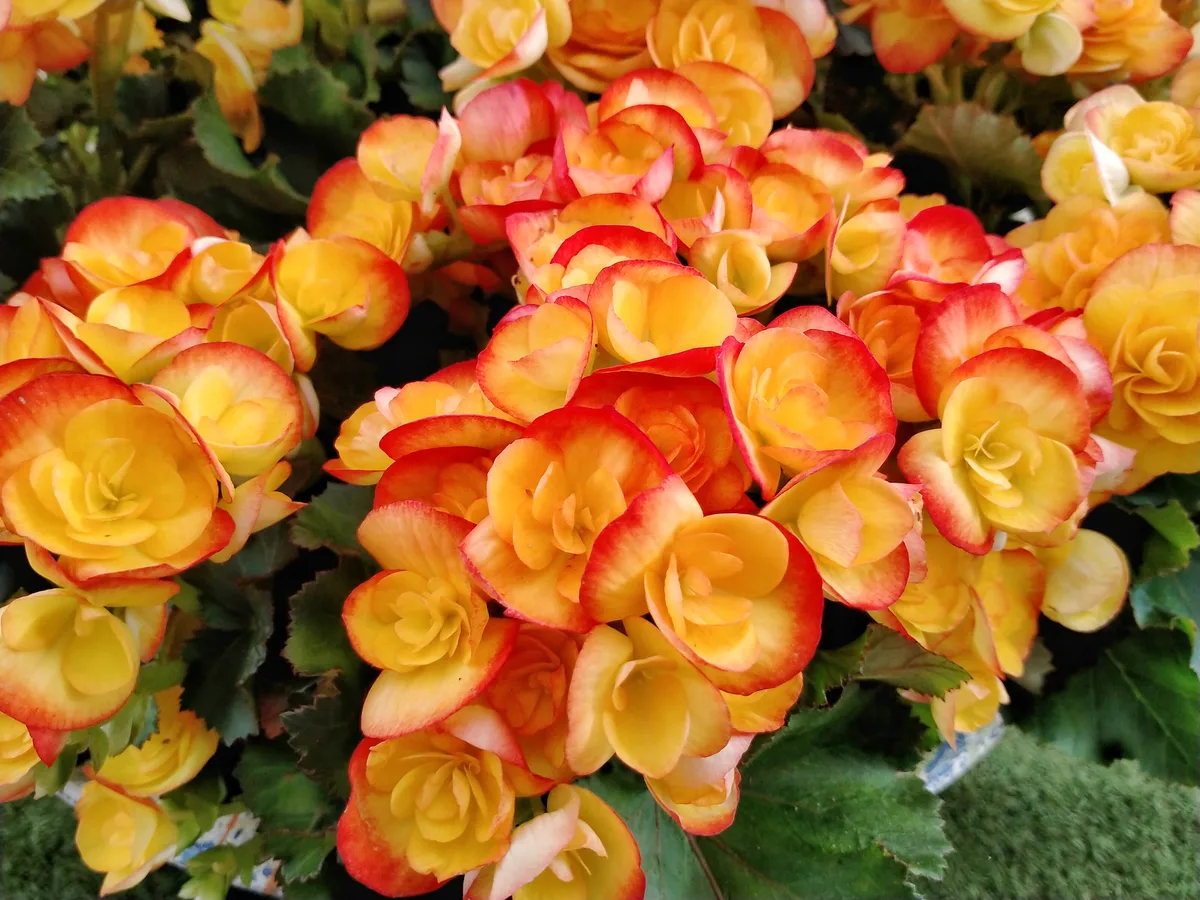
If you, too, are a little bit mystified by this plant, or if you’d like to learn how to grow begonias successfully, here are my tips for keeping them happy.
And by the way, not only did I completely change my mind about begonias being fussy, but I also started recommending this plant to anyone that will listen. And the friends who dare to visit are wont to leave my place with a begonia gift.
How many types of begonias are there?
Ah, the million-dollar question! Would you be surprised if I told you that there is no definite answer to this question? With so many species of begonias available, and so many new cultivars being brought to market, the lines between the different categories of begonia are blurred.
Not to mention the fact that there are begonia-searching expeditions going on in the wild (in places such as Vietnam and South Korea) as we speak, according to The Begonian, the official journal of the American Begonia Society.
But let’s try to demystify the most common types of begonias, using the same trustworthy source. Based on their growth habits, begonias can be divided into the following main categories :
1. Tuberous begonias
With over four thousand registered cultivars, the tuberous begonias are one of the most popular types of begonias. They are mainly descendants of begonias introduced from species growing in South America, with their cultivation first recorded as early as the 1800s.
Gardeners prefer tuberous begonias due to their showy colorful flowers which can range greatly in color (pink, red, white, orange) and size (from half an inch to 10-inch clusters).
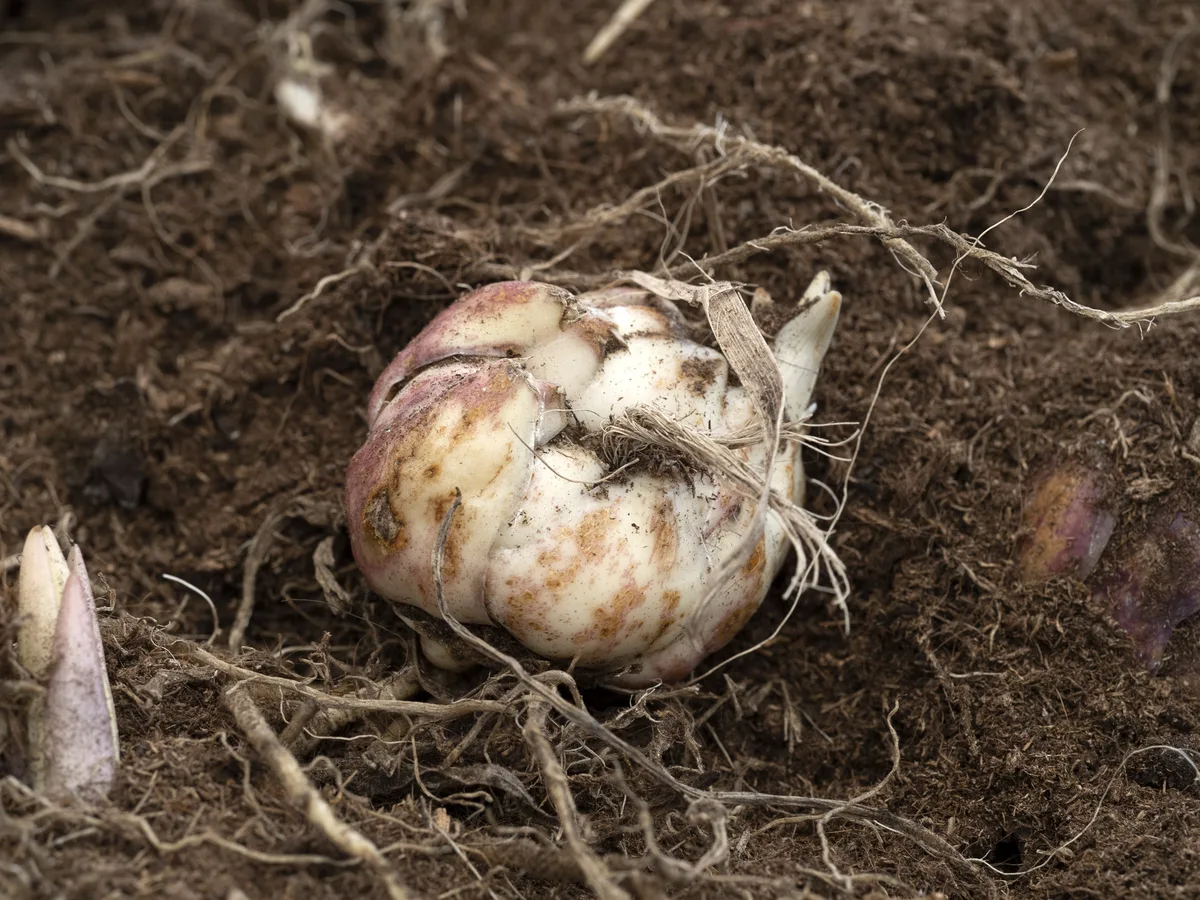
Tuberous begonias grow from tubers that require low temperatures to germinate. They’re usually grown as annuals, with the tubers stored in a cool dry place over winter. They usually bloom in the spring and summer, making them perfect for temperate-climate gardens.
2. Rhizomatous begonias
Rhizomatous begonias have a thick stem with short internodes (the distance between leaf nodes). The rhizomes can help the plant climb or trail, with some plants developing a sturdy structure under the surface of the soil.
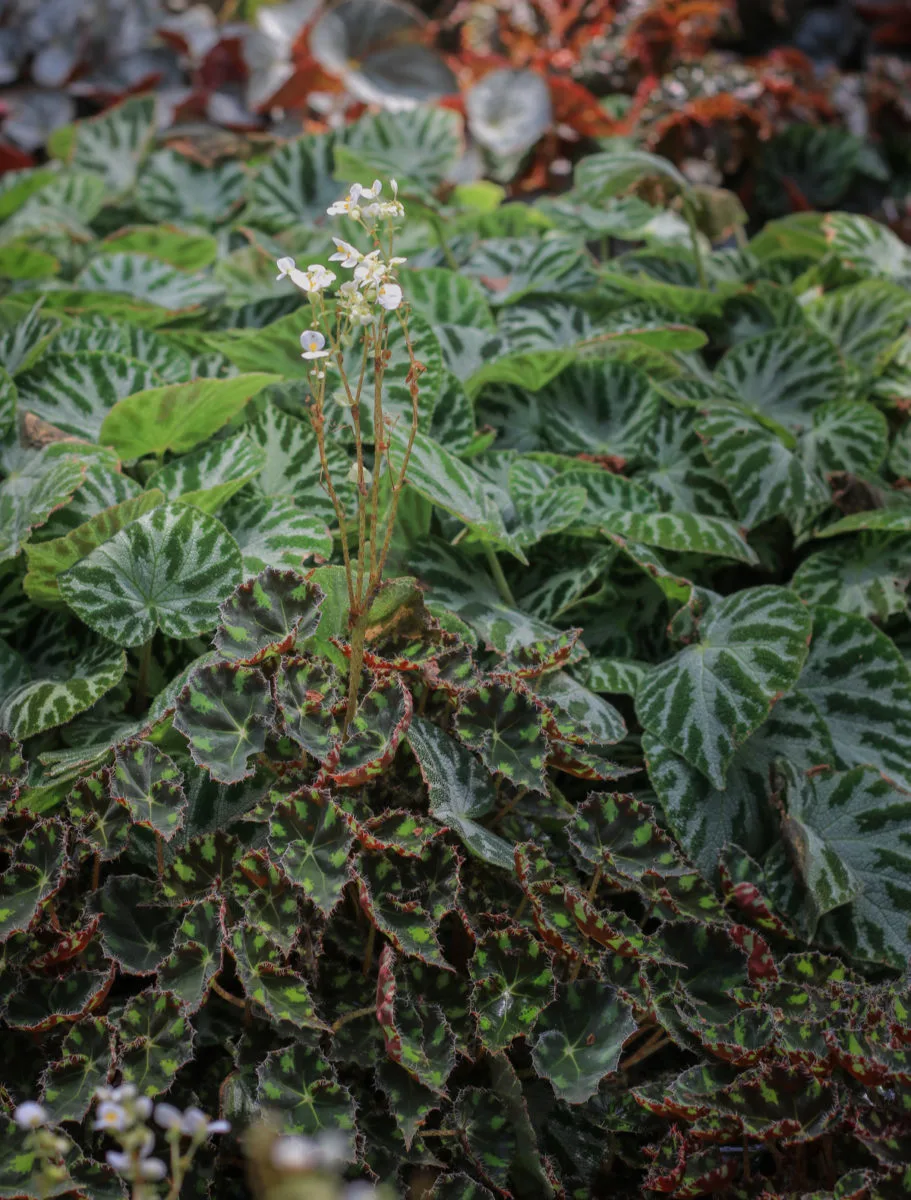
This type of begonia usually flowers in winter and spring (sometimes as late as June) in a dizzying array of colors, but there are some that flower all year long. Most rhizomatous begonias are grown for their dizzying foliage that comes in all types of textures, from hairy to fuzzy to pebbled.
3. Cane begonias
According to the American Begonia Society, there are about 81 species classified as cane begonias and almost two thousand cultivars. With cane begonias, the new shoots grow straight up first, and only start branching after they reach a certain height. They can grow quite tall before they begin branching, but once they do, they can grow into a pretty shrubby plant.
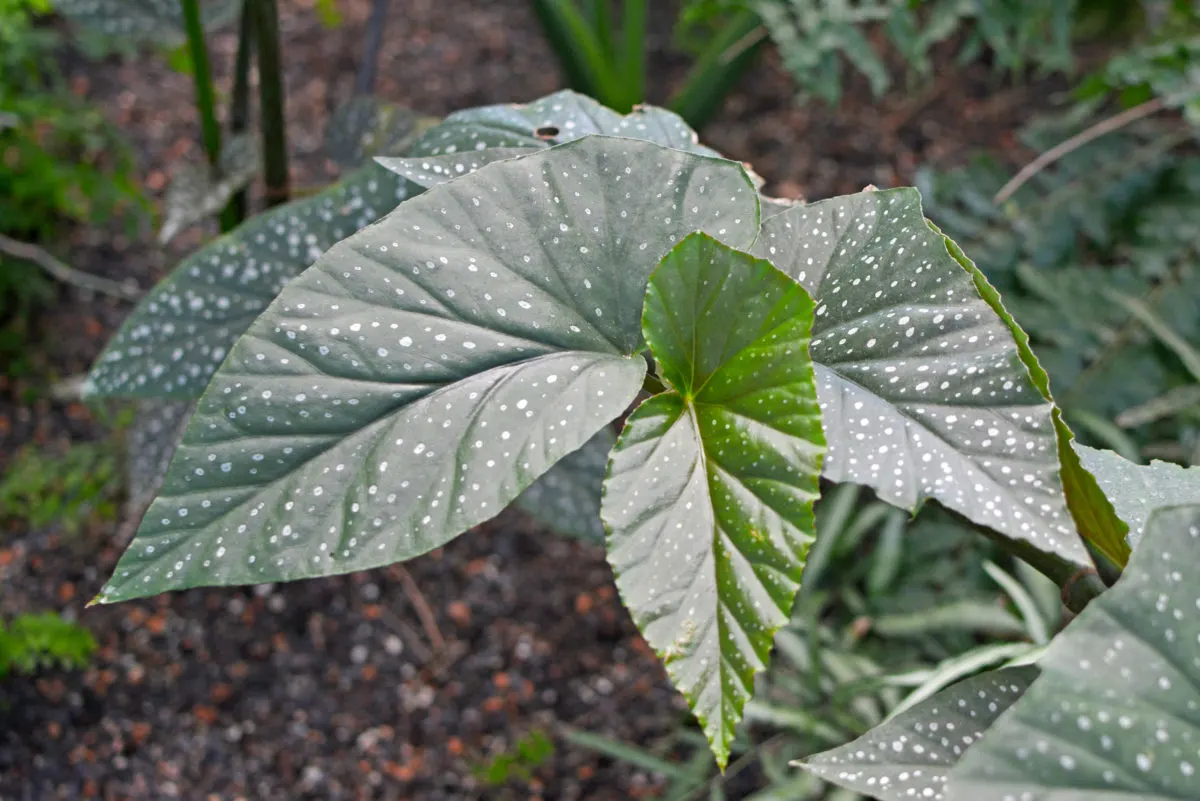
This type of begonia is very easy to grow and perfect for new gardeners that need a bit of confidence. Cane begonias are suitable for garden beds, as well as for indoors and in greenhouses. And they’re very easy to propagate from stem cuttings and are grown for both their foliage and their flowers.
‘Angel wing’ begonias are a very popular type of cane-like begonias, and so is the Superba variety.
4. Semperflorens (wax begonias)
Super popular with new plant parents (just check Instagram), this category of begonias has waxy leaves and (as the name suggests) long-lasting flowers in shades of bright red, pink or white. They’re often grown outside in borders, garden beds or pots (due to their compact growth habit), and they can be kept as perennials in frost-free climates.
Wax begonias tolerate low water and more sun than other types of begonias, so they’re truly the no-fuss kind.
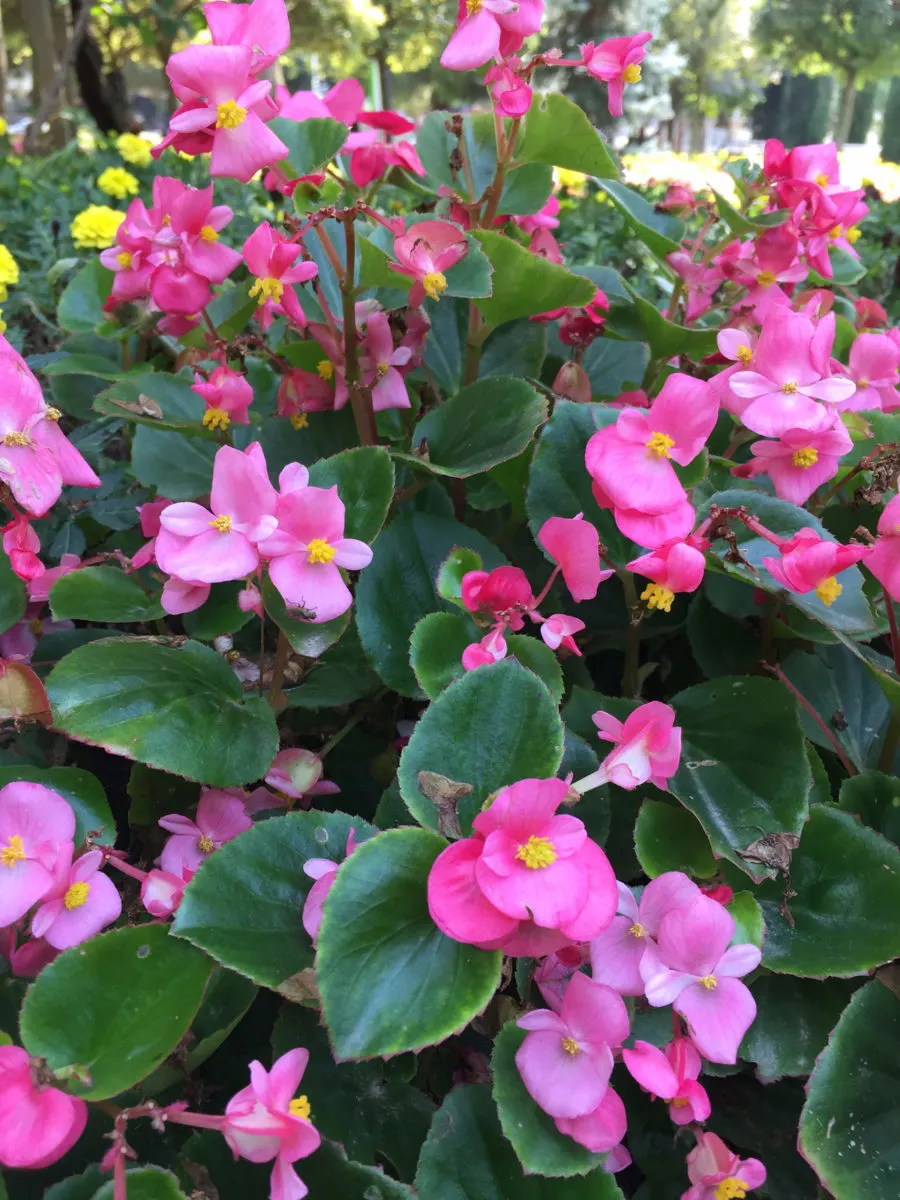
Pink semperflorens begonia in the garden
5. Rex begonias
Rex begonias are technically a type of rhizomatous begonia, but with over four thousand cultivars, they get their own category in flower shows. Rex begonias have showstopping multicolored leaves in shades of silver, maroon, burgundy, purple, orange and red, often with an iridescent pattern.
All the cultivars in this category are descended from the species Begonia rex species (native to India and cultivated since the 1850s) that was crossed with other types of rhizomatous begonias.
And if you’ve ever had a begonia break your heart, chances are it was a rex begonia. Out of all the types we’ve mentioned, they’re the hardest to grow due to their sensitivity to temperature variations. In addition, rex begonias are often prone to leaf loss and going dormant – which prompts the more inexperienced growers to declare them dead and dispose of them.
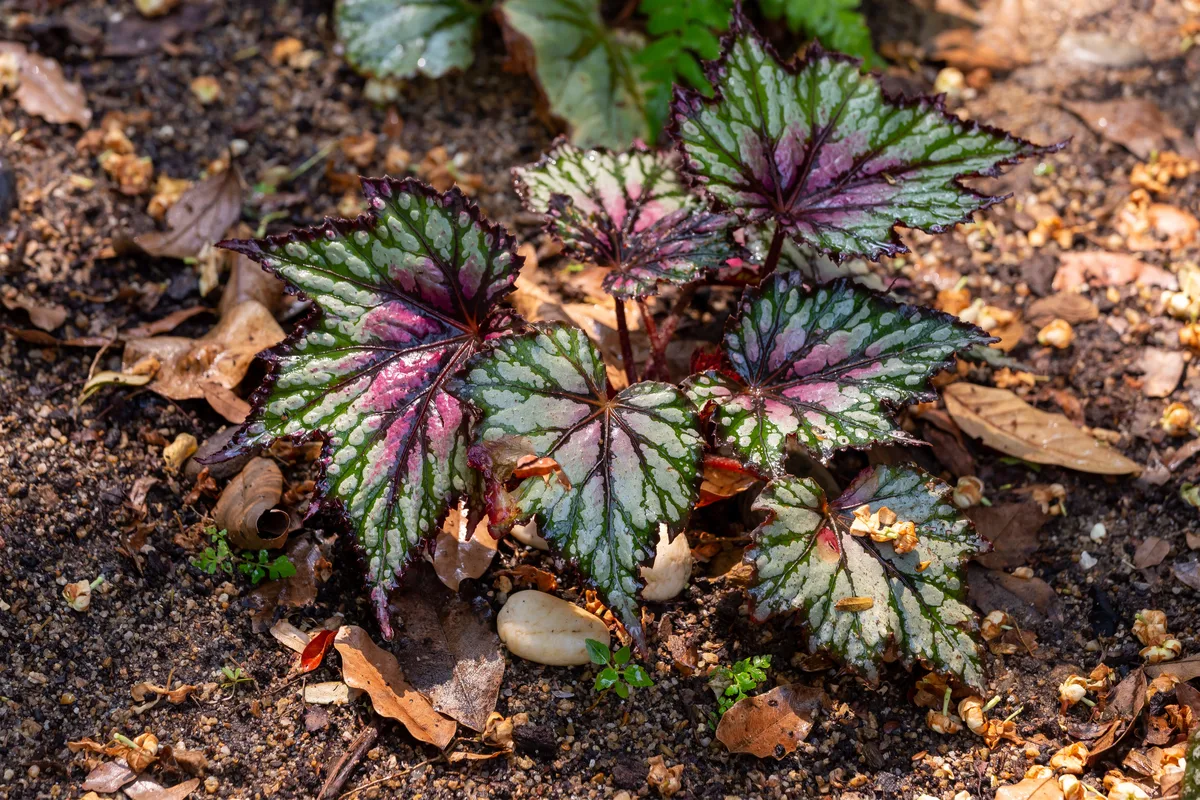
In addition to these five common categories, there are also trailing begonias, thick-stem begonias and shrub begonias.
That was quite a crash course, but I hope it won’t discourage you from giving begonias a try in your garden. The fact that there are so many begonias hybrids is a testament to their popularity and how easy it is to grow them.
Most begonias offered for sale in plant stores and nurseries are likely to have been hybridized to showcase one or more of their characteristics: leaf shape and color, flower color, growing habit or pest resistance. So right from the get-go, you have an advantage in growing begonias that are adapted to your specific climate.
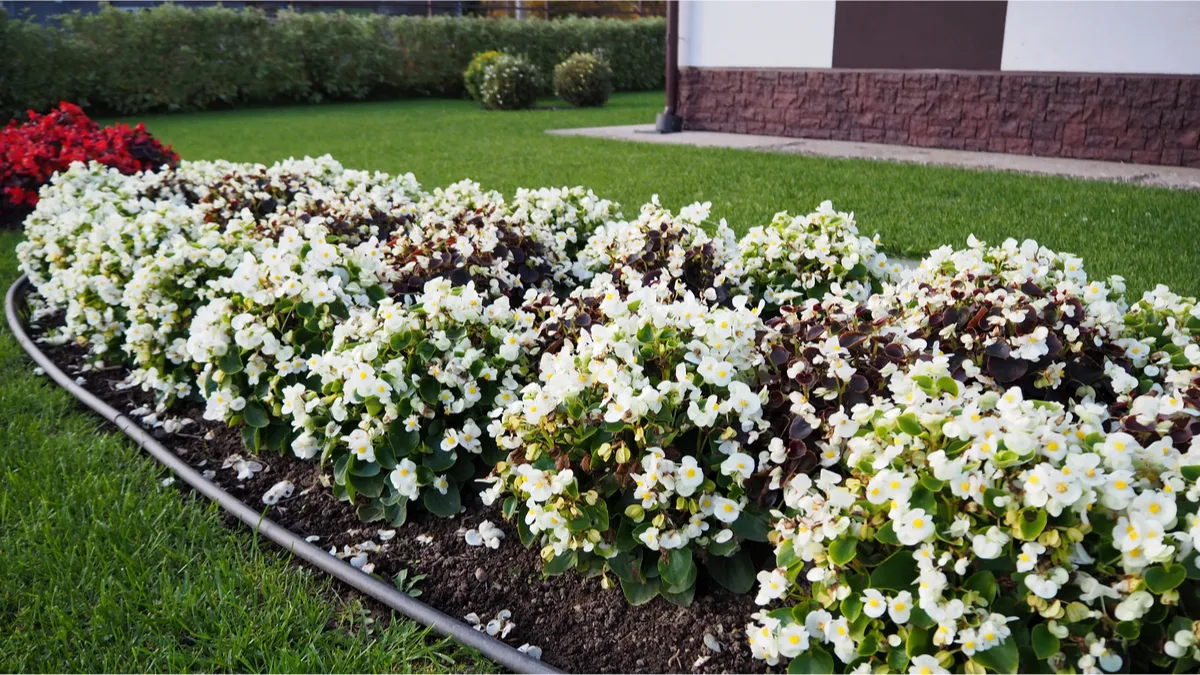
In this article, you’ll learn how to keep your outdoor begonias happy, whether you’re growing them straight into the ground (in garden beds or borders) or in planters and hanging pots.
What kind of soil do begonias like?
Begonias do well in slightly acidic soil with good drainage. Because of the nature of their root system, you should make sure the soil you plant your begonia in is loose, not compacted. Your begonia will be more lush and vigorous above ground if it doesn’t expend all its energy in trying to push out roots through clay soil.
Adding leaf mold to the mix before you plant your begonias in spring is the best way to keep the soil aerated. If you’re growing your begonias in containers, try adding ingredients such as perlite, vermiculite and sphagnum moss to the potting medium.
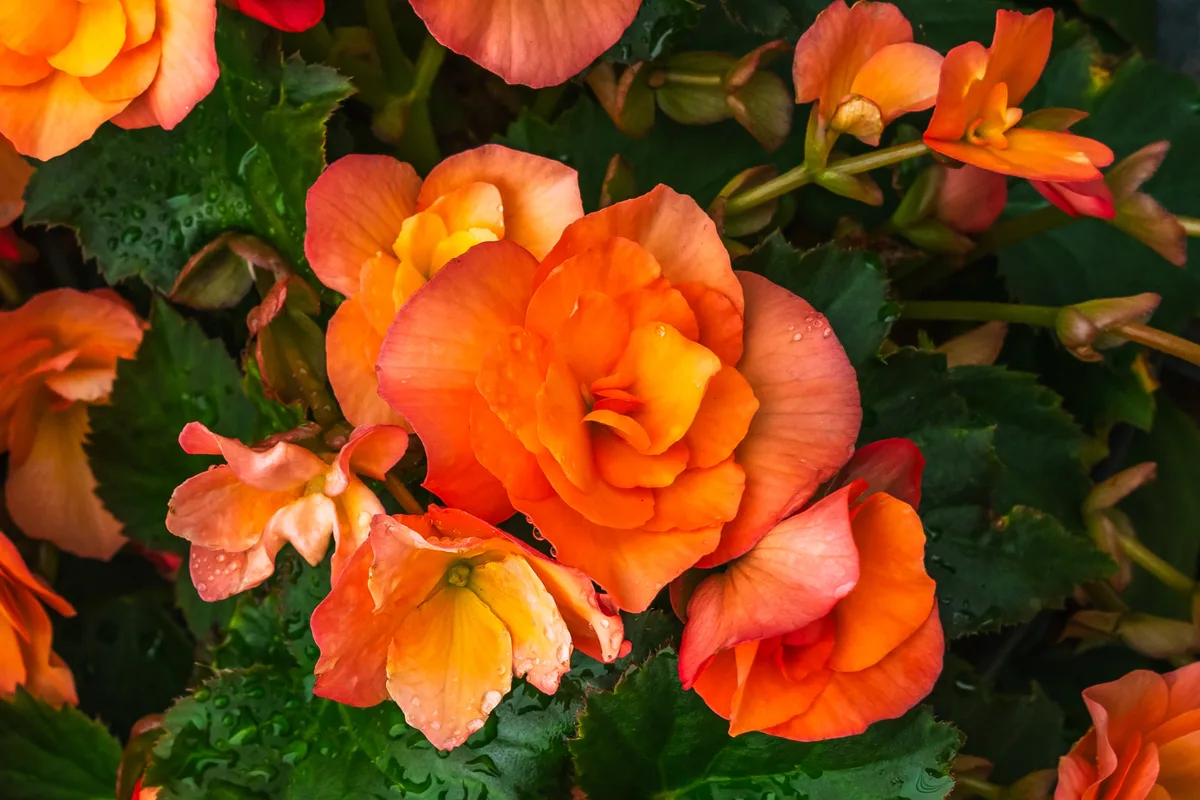
But the most important thing to keep in mind when it comes to the perfect soil for begonias is to never allow the soil to become waterlogged. Begonias are susceptible to root rot, so it’s best to put in the effort to increase the drainage of heavy garden soil by incorporating compost, leaf mold or sand.
Avoid watering the soil around the begonias with a high-pressure water jet hose. If you’re growing begonias on your deck or patio, make sure the containers have enough drainage holes.
Should I water my garden begonia?
The answer is a resounding yes! I know people who believe in the “rain is enough” theory of gardening like it’s some sort of Hunger Games for plants. But with the unpredictable weather patterns that we have to account for nowadays, watering your garden becomes necessary, especially while the plants are getting established.
You should water begonias growing in the ground if your garden is going through a dry spell. A sure sign that your plant needs watering is if the soil is dry about five inches below the surface.
The well-draining soil that we mentioned above should be rich enough to retain just the right amount of water, but don’t fall prey to one of the most common misconceptions about begonias – that they prefer wet soil. That’s partly true, as this plant does prefer moist soil, but they shouldn’t be left in sopping wet soil for too long as they’re very susceptible to root rot and stem rot.
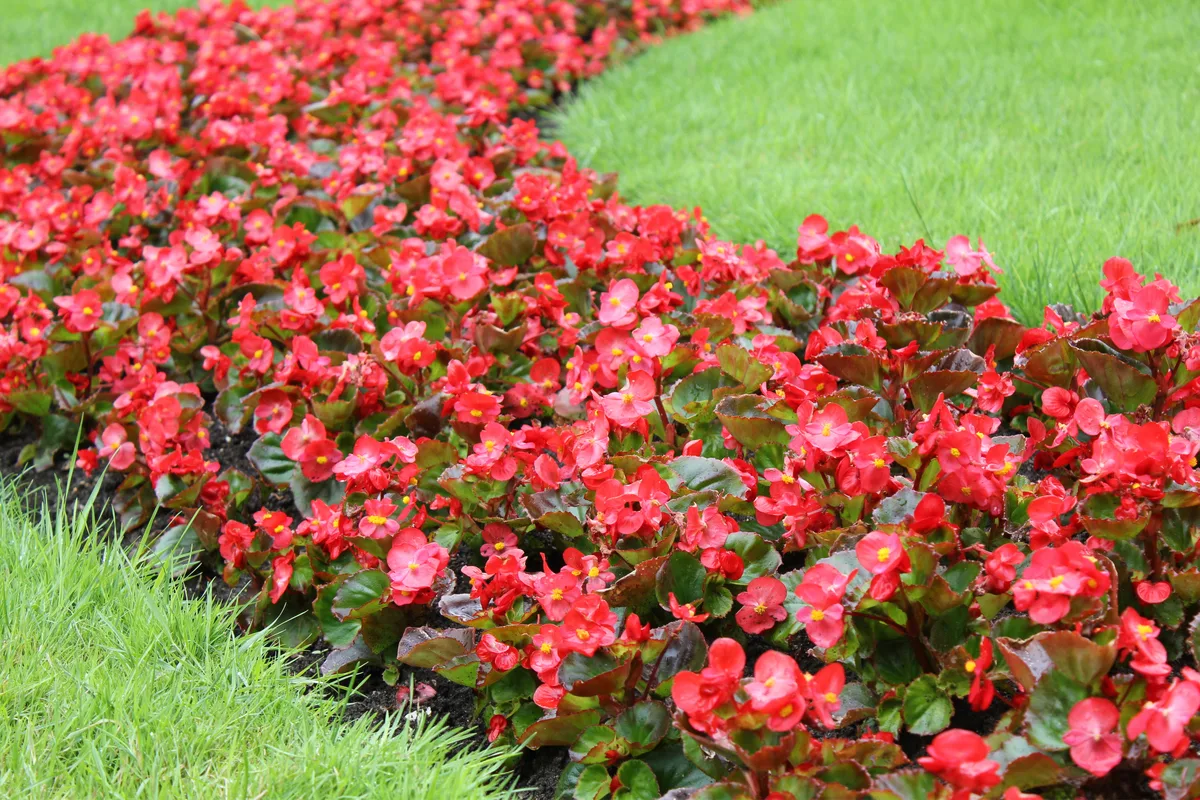
Don’t rush into watering your plant if you’re getting average amounts of rain, especially as rhizomatous and cane varieties can hold some water in their thickened stems that can sustain the plant through short dry periods. Always water at the base of the plant and around the tuber or the rhizome, not directly above it. This allows the moisture to be distributed evenly without pooling too much in the tuber.
Another important rule to follow is to avoid watering the leaves, as much as possible. Getting too much water on the foliage may lead to powdery mildew and other fungal diseases. It’s best to water your garden plants in the morning or in the evening, to prevent quick evaporation and leaf scorch.
If you’re growing begonias in containers, you should water them more frequently even when it rains. If the soil is dry to the touch about two inches below the surface of the soil, then your plant needs another watering session. Give it a thorough soak until water comes dripping through the drainage holes. Allow all the water to drain out of the pots.
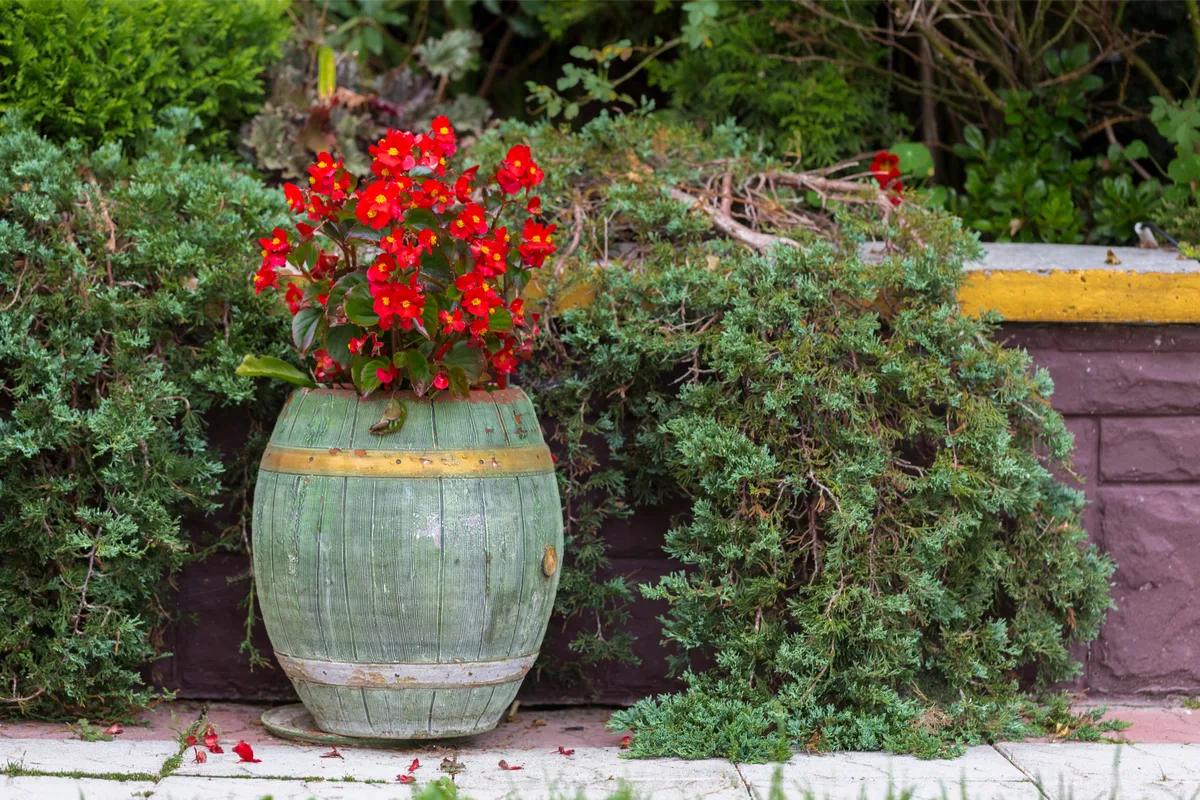
If you’re growing tuberous begonias, you should reduce your watering and remove any new flowers in October. This allows your begonia to put its energy back into the tuber and prepare for a new growing season.
Should I plant my begonia in the shade or in the sun?
Begonias do well in locations that are partly shady. Even though there are some varieties that grow very well in full shade, most begonias need a little bit of sun – either morning sun or dappled afternoon sun. Too little light will result in leggy growth and low bloom.
Some newer begonia cultivars can tolerate direct sun, especially in the morning, but only in cooler northern climates. Avoid planting or placing your begonias in full sun, as this may lead to leaf scorch and bloom loss.
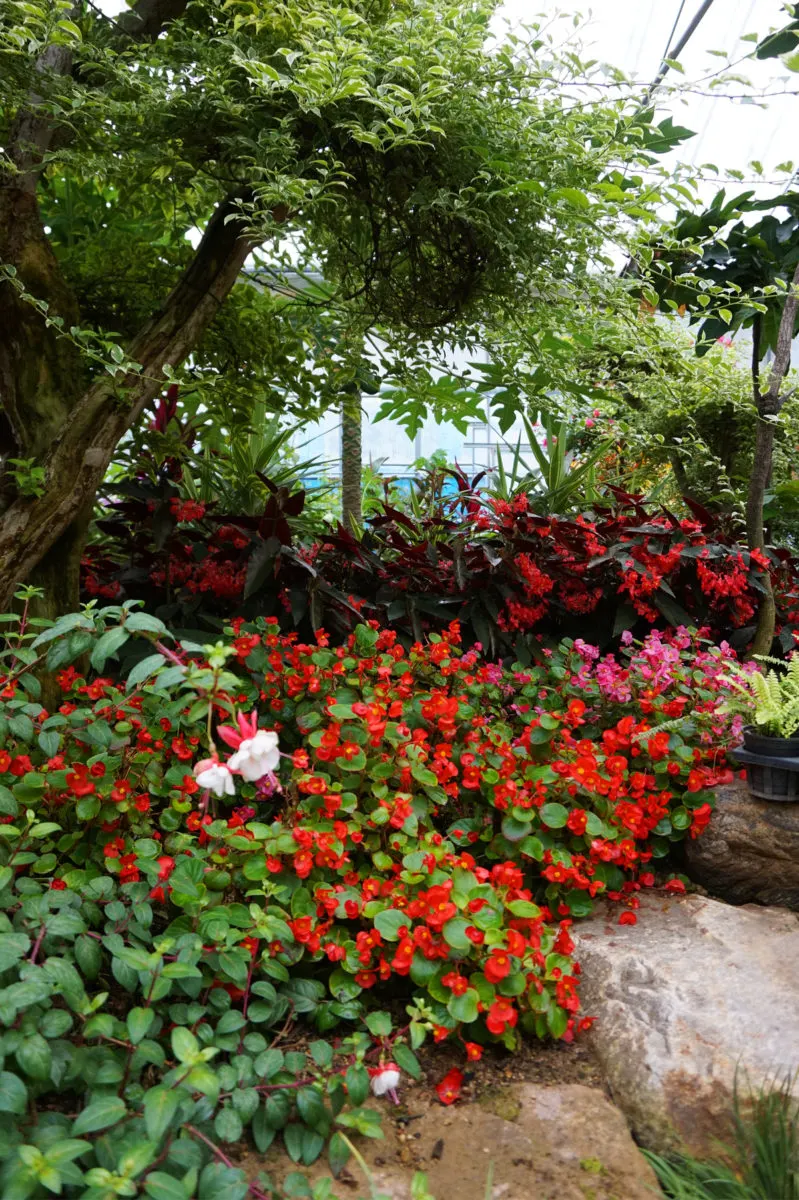
Semperflorens (wax) begonias will tolerate and even thrive in direct sunlight in most climates. In fact, they will neither grow well nor flower in full shade. In general, green-leaf varieties do well in morning sun and afternoon shade, while colored-leaf cultivars can handle brighter light for a longer period of time. With so many varieties and cultivars on the market, it’s best to always follow the instructions on the tag provided by the grower.
How do I fertilize my begonias?
The first step of a good fertilizing regimen for begonias starts even before you put your plant in the ground. So at the beginning of the growing season, you should amend your soil with compost and leaf mold. You can also add organic slow-release fertilizer pellets to the compost that you’re planting in, making sure you properly work it into the ground. Begonias are heavy feeders, so giving them a good head start is key.
Once the plants get over the shock of transplant and look established, it’s time to put them on a good fertilizing regimen. You can apply an organic balanced fertilizer (such as a 20-20-20 fertilizer mix) monthly.
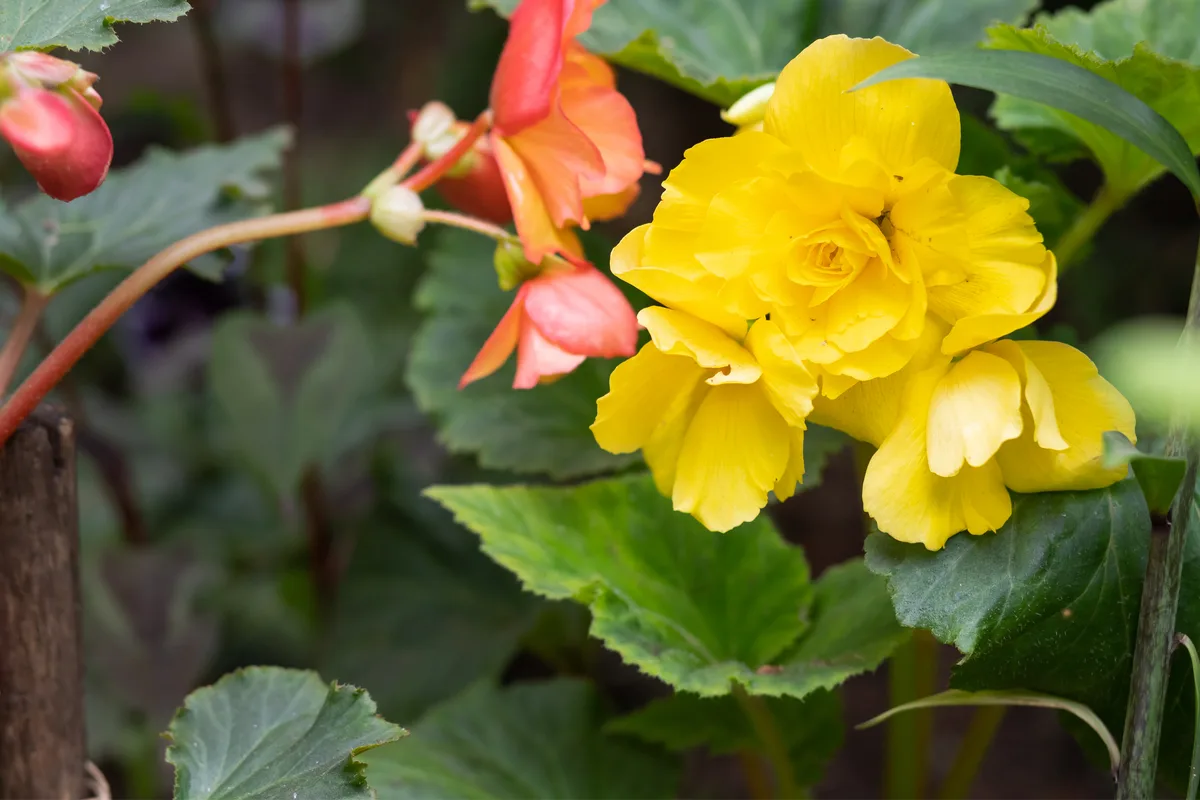
But depending on what variety of begonia you’re growing, you may want to adjust the fertilizer you’re using.
If you’re growing a variety that’s rich in blooms, choose a fertilizer with a higher phosphorus content (indicated by a higher middle number, such as a 15-30-15 organic fertilizer). If you’re growing your begonia for its foliage, you can use a balanced fertilizer or a fertilizer that has a higher nitrogen content (indicated by a higher first digit, such as a 16-8-12 organic formula).
If you’re growing begonias in a container, use a slow-release organic fertilizer so that the nutrients don’t wash away with every watering session. Use a much lower dose of fertilizer for plants growing in pots than for the ones growing in your garden.
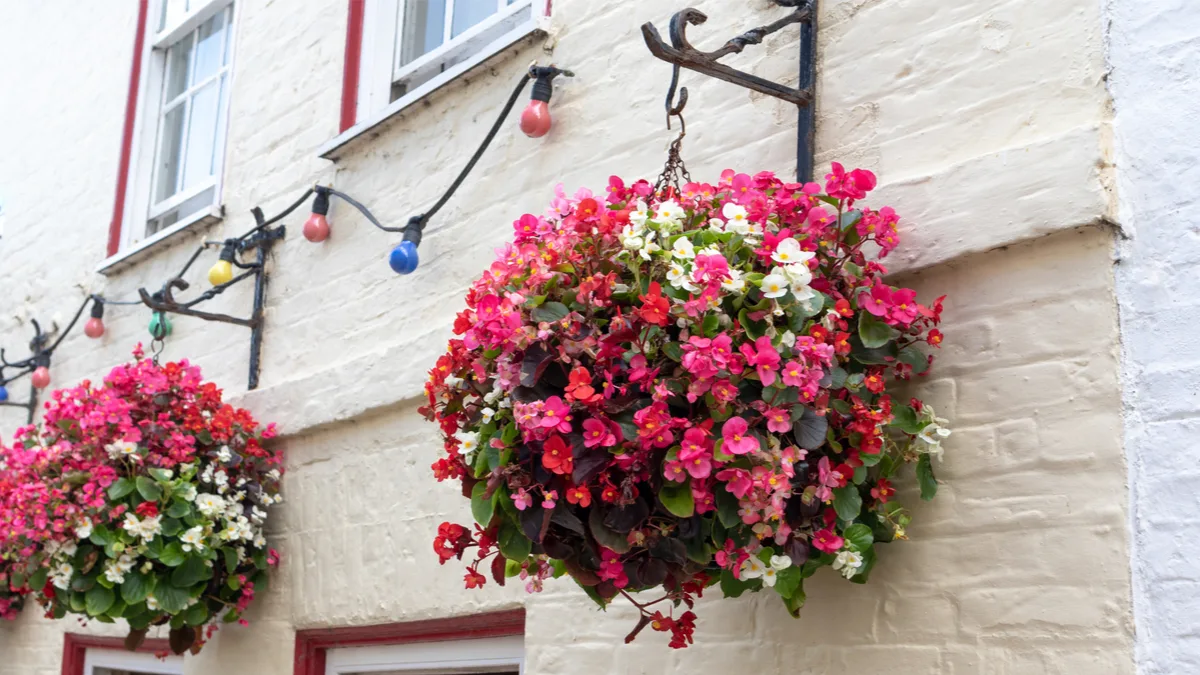
As the growing season slows down, you should also stop fertilizing your begonia, especially the tuberous varieties. Starting in September, you should encourage the plant to slow down its growth above ground and concentrate on sending its energy back into the tuber for the next growing season.
Should I prune my begonias?
If you want to encourage bushier plants and larger blooms, you can pinch back growth tips starting in spring, doing it monthly or when the tips reach five inches long. You should deadhead tuberous begonias regularly and remove the old spent flowers.
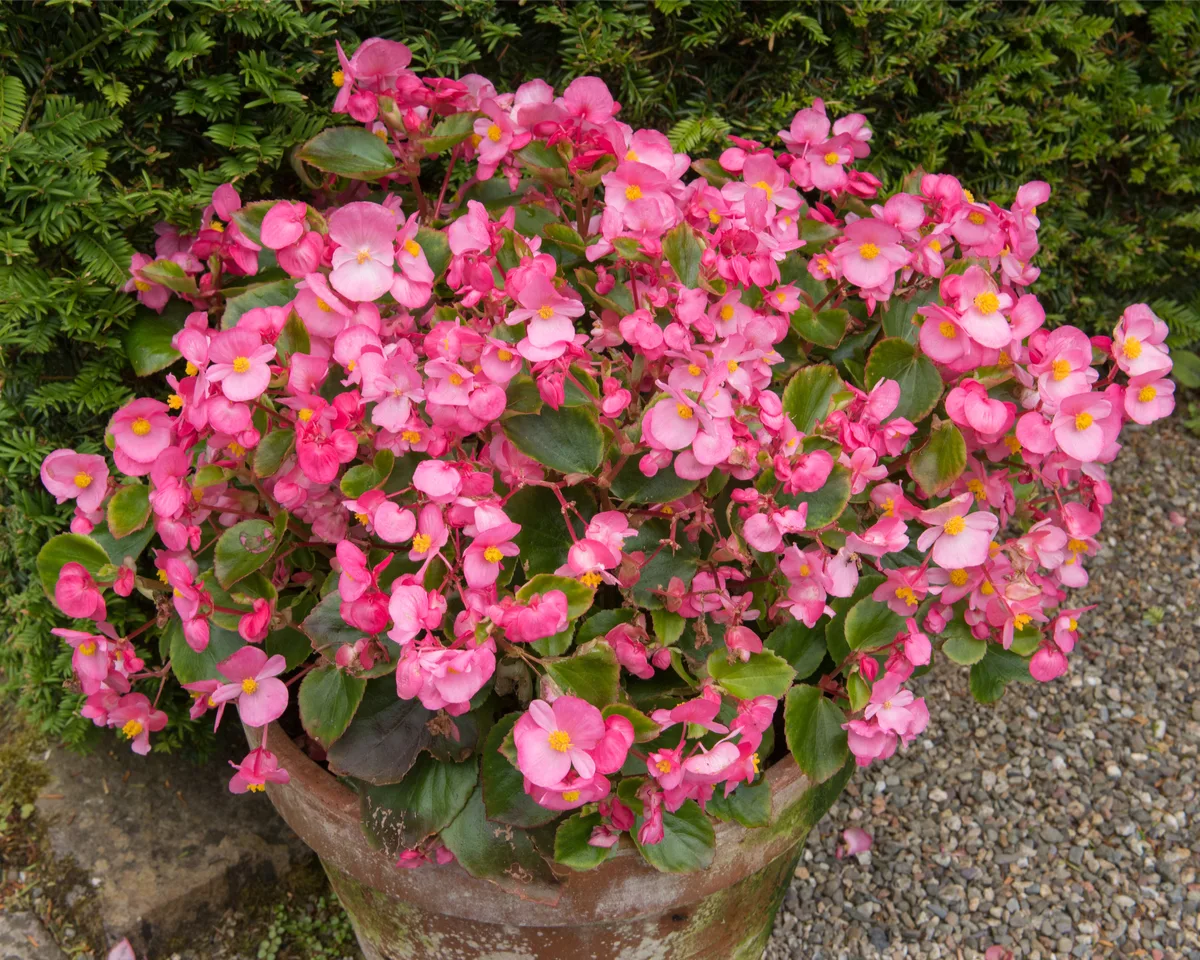
If your climate is mild enough to allow you to overwinter your begonia in the garden, don’t prune it until early spring when you start seeing new growth. The crown of the plant, even if it’s dry, will help protect the roots from cold temperatures, effectively acting as a self-mulch.
Are begonias susceptible to pests and diseases?
With begonias, you shouldn’t worry too much about pests. However, fungal diseases are a different story. Here are the most common ones and what you can do to prevent them
Powdery mildew
This is a fungus that leaves white spots on leaves and flowers which causes them to turn yellow and drop. Mildew is a common problem in some climates that have high humidity, but not enough sun.
There are some varieties of begonias that have been specially bred to have a higher resistance to fungi colonization, although there’s no such thing as a one hundred percent disease-proof plant.
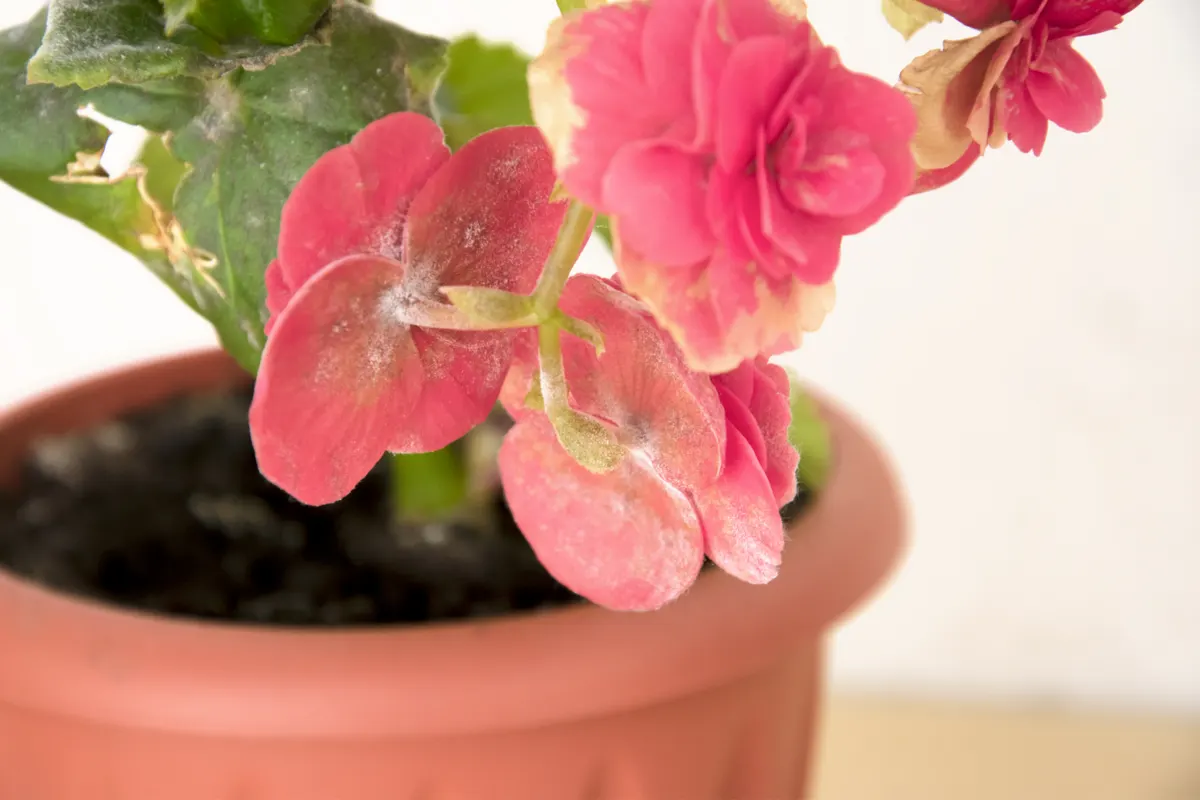
To prevent mildew, you should space your plants further apart in order to allow for better air circulation. If you do notice mildew growing on your begonias, spray it immediately with an organic microbial fungicide.
Botrytis rot
Also called gray mold (and dubbed “a gardener’s worst nightmare”), botrytis rot may affect begonias, especially in a particularly wet season. It looks like water-soaked, brown rot that occurs primarily on the leaves and then moves on to the stem. It may first appear on the oldest leaves that are in contact with the soil. To prevent this, make sure the soil has proper drainage and that there’s enough airflow around the crown of your plant. Dispose of any spotted leaves as soon as you notice them.
Stem rot
Stem rot is another fungal disease that may attack begonias. The name is self-explanatory, and the disease will leave the stem hollow and unable to transport nutrients to the leaves. Use an organic fungicide as soon as you notice the rot.
But if the spread gets out of hand, it’s better to dispose of the affected stems right away. Discard them with regular household waste, not in your compost pile.
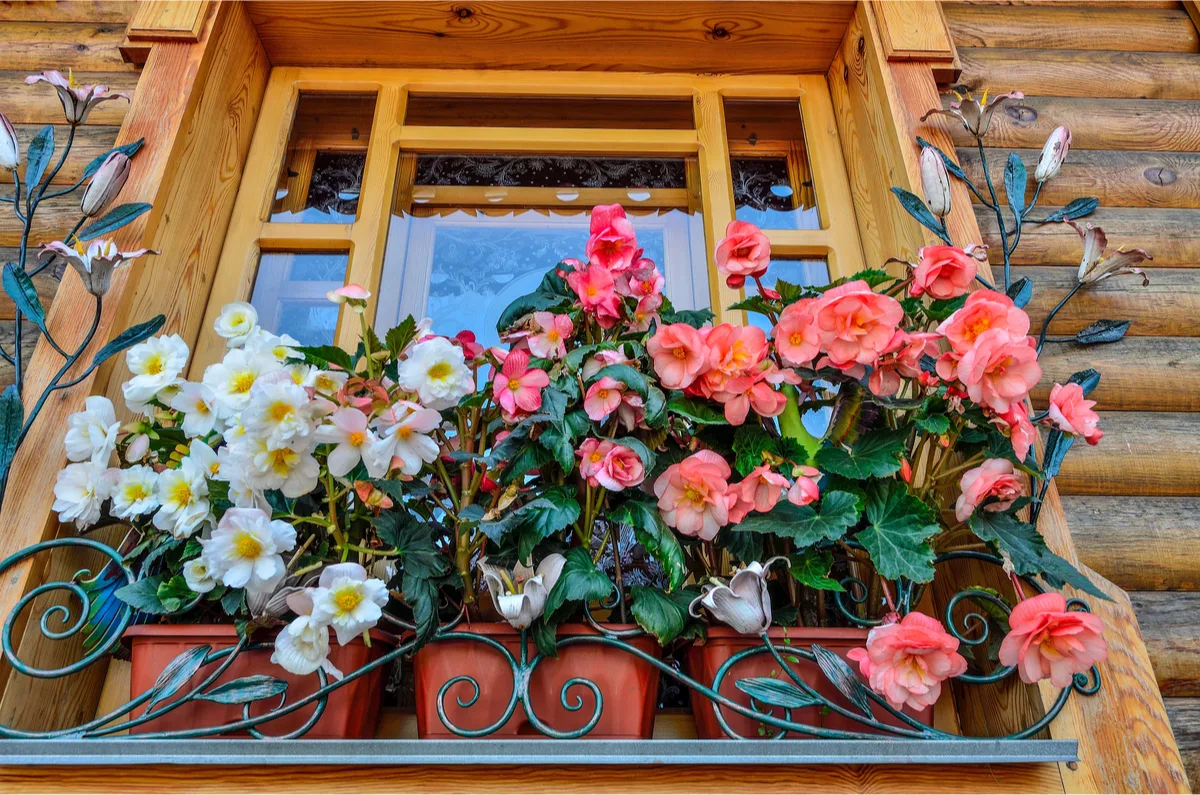
Other tips for growing healthy beautiful begonias
- If your garden is exposed to strong winds, plant your begonias in a more sheltered place. Their fragile blooms and foliage can’t withstand high winds.
- Some begonia varieties will benefit from staking or climbing structures. Place a bamboo pole or a trellis next to upright tuberous begonias to allow them to climb.
- You can mulch your begonias to keep the temperature and humidity constant below soil level. Keep the mulch a few inches away from the stem of the plant.
- Air circulation is very important for begonias. Space them at least 10-12 inches apart, accounting for growth. Don’t crowd them out too much with other plants.
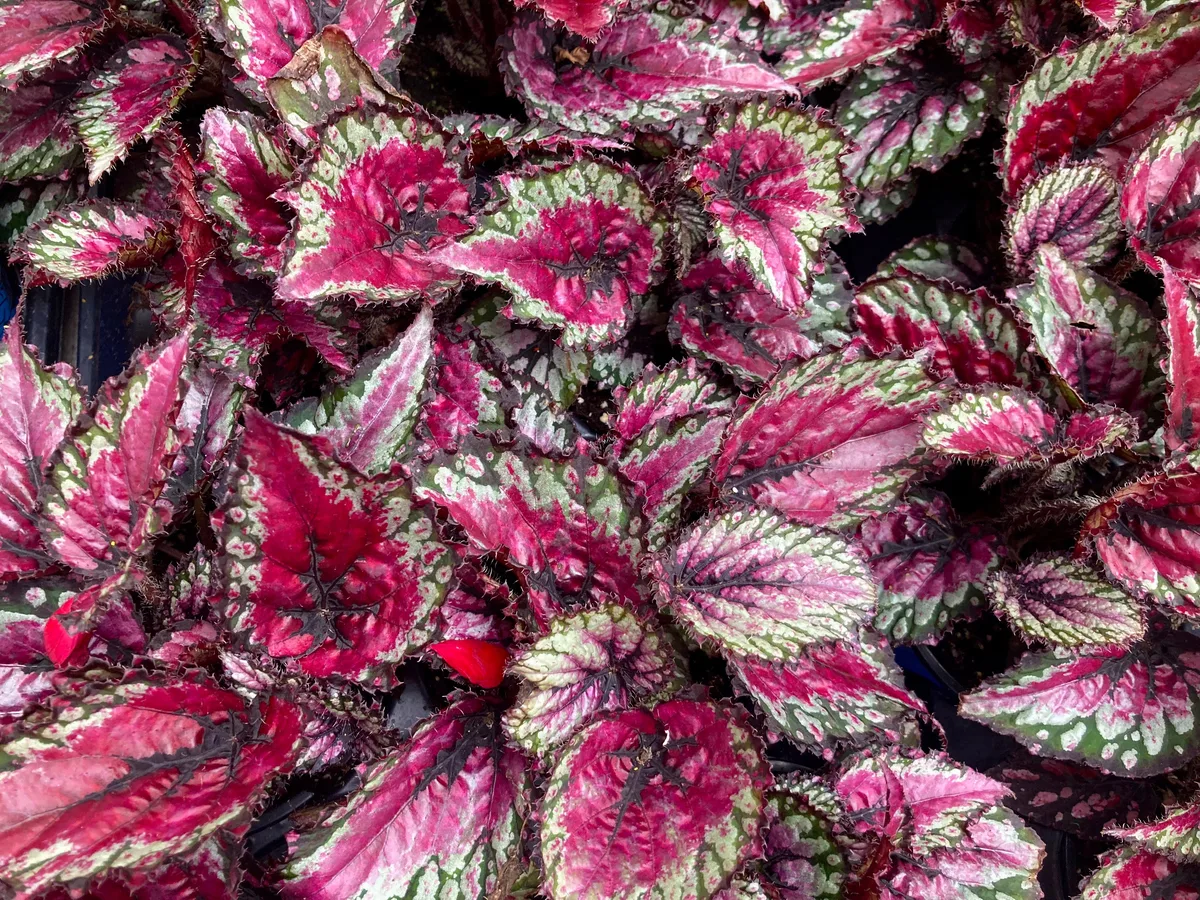
What should I do with my garden begonias in the fall?
The answer to this question depends on where you live and what type of begonia you’re growing. If you’re in a climate that doesn’t get frost, you may be able to leave your begonia happily growing in the garden and it will bounce back the following year. However, growing begonias as perennials is more the exception than the rule.
Since begonias prefer temperatures between 55F and 75F, anything going below that minimum for longer than a few days will turn even your perennial begonias into annuals.
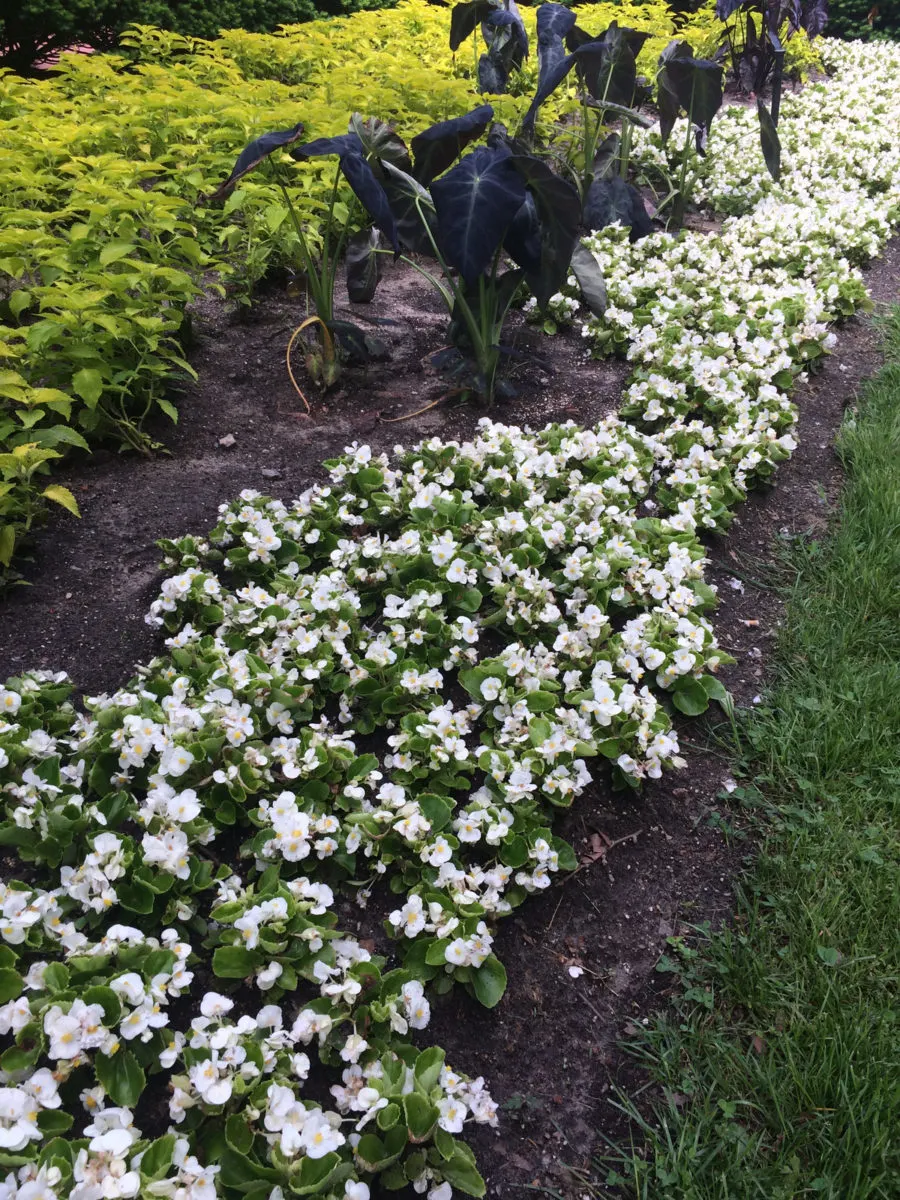
If you’re growing tuberous begonias, the best way to get more begonias next year is to dig out the tubers at the end of the season and store them in a cool dry place indoors (much like you would spring bulbs). After the last frost the following spring, you can plant your tubers again and you’ll be rewarded with another batch of begonias very similar to the one you started with.
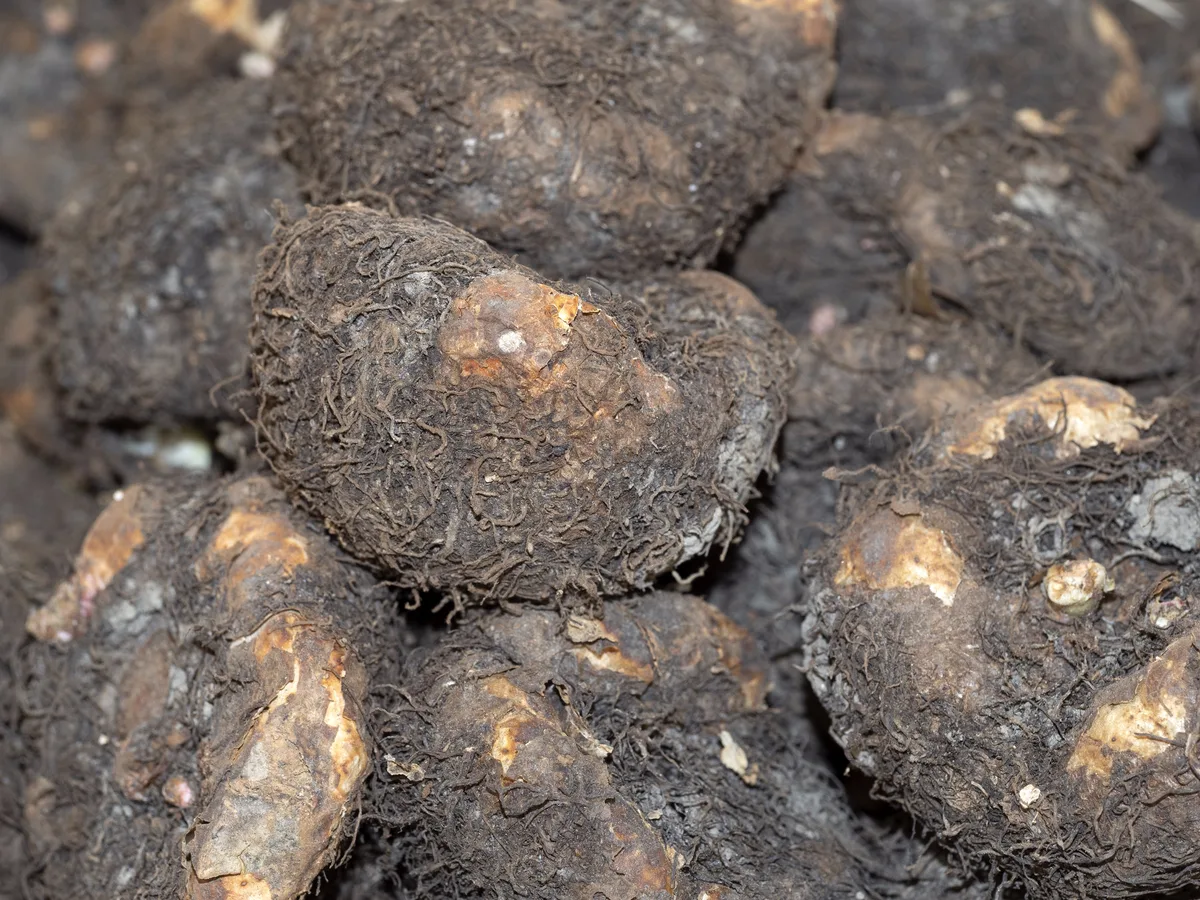
For container-grown begonias, that’s even easier. Let the plant die down at the end of the season, then move the container indoors (a cellar or a garage should do just fine, as long as the temperatures don’t drop below freezing).
As you can see, begonias aren’t hard to grow, even for a newbie gardener. I hope you’ll give them a try this summer and I guarantee you’ll get hooked.
